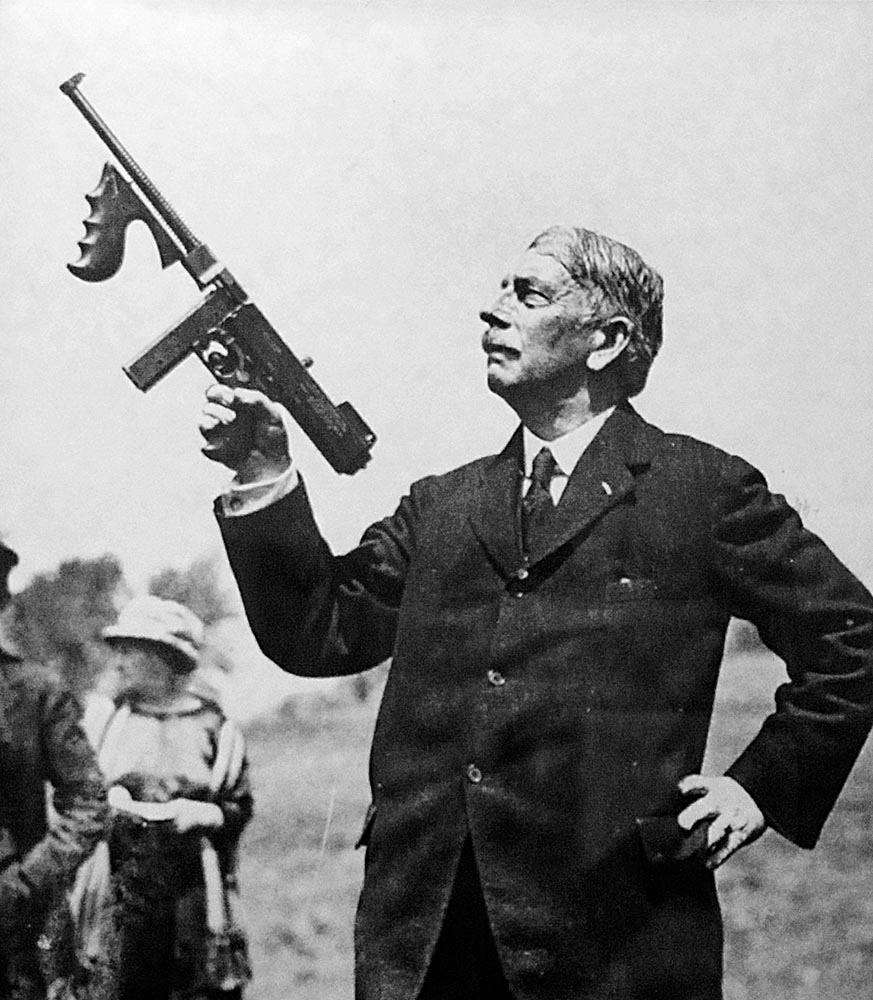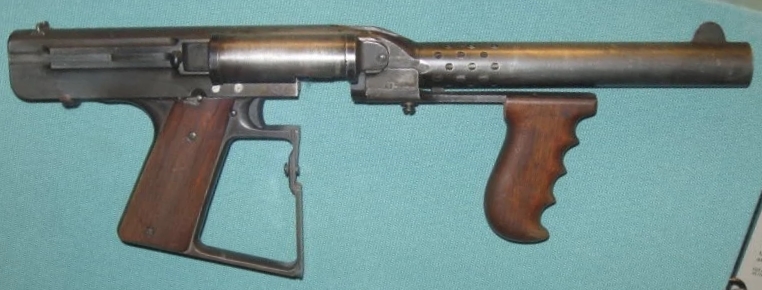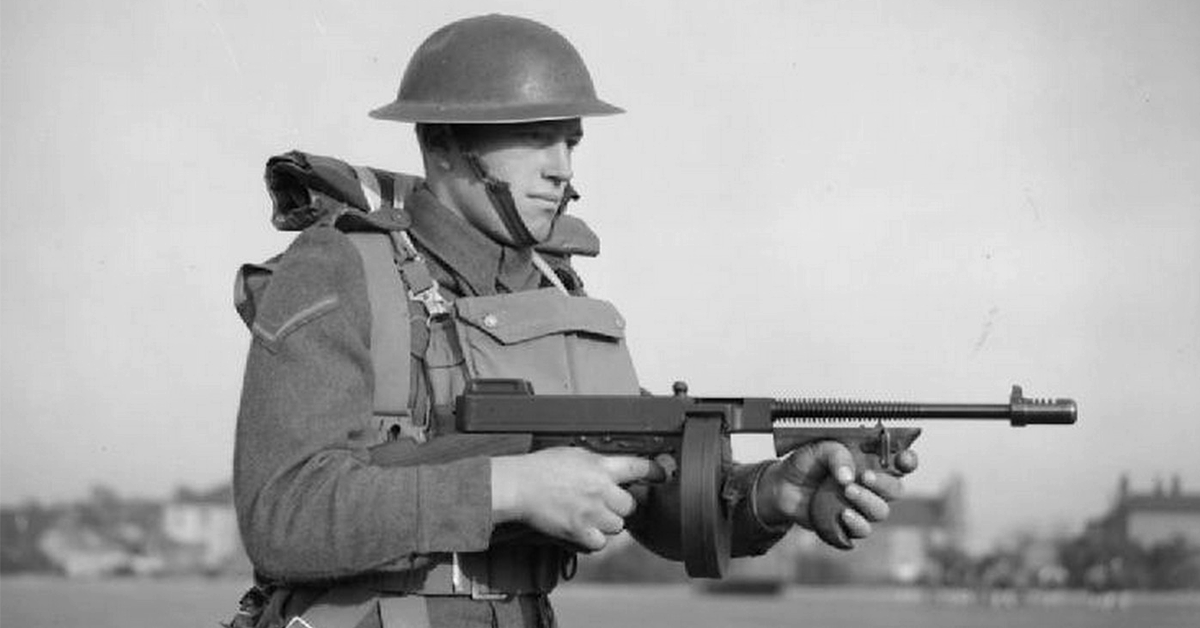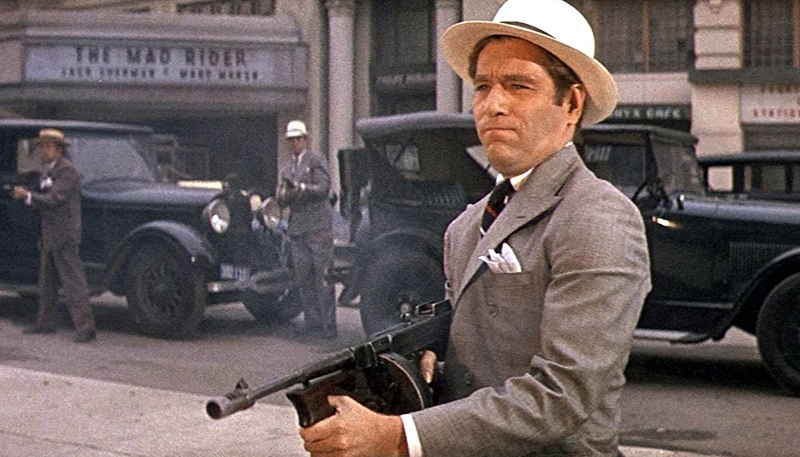From Trench to Theater: The Enduring Legend of the Thompson Submachine Gun
Share

The Thompson submachine gun, affectionately known as the "Tommy Gun," holds a storied place in both military history and popular culture. From its inception during World War I to its iconic status in Hollywood films, the Thompson has left an indelible mark. Today, enthusiasts and collectors can own a piece of this legacy through high-quality replicas like those produced by Denix. This article delves into the rich history of the Thompson submachine gun, its design evolution, military and post-military uses, cultural significance, and provides an in-depth review of Denix's non-firing replicas.
Origins and Design Evolution

The Thompson submachine gun was conceived by Brigadier General John T. Thompson during World War I. Born on December 31, 1860, in Newport, Kentucky, Thompson was a career military officer with a deep understanding of firearms. He graduated from the United States Military Academy at West Point in 1882 and later served in various ordnance capacities, gaining extensive experience in weapon design and production. His vision was to create a lightweight, fully automatic firearm that could provide soldiers with significant firepower in close-quarters combat, particularly in the trenches of World War I. This concept led to the development of the "trench broom," a weapon intended to sweep through enemy trenches with devastating efficiency.
In 1916, Thompson founded the Auto-Ordnance Corporation to develop his new weapon. Collaborating with engineers Theodore H. Eickhoff and Oscar V. Payne, the team focused on utilizing the Blish lock, a friction-delayed blowback system patented by Commander John Blish. This mechanism was initially believed to be effective for high-powered rifle cartridges, but practical experiments demonstrated its greater suitability for the .45 ACP pistol cartridge. The resulting firearm was compact, capable of a high rate of fire, and chambered for the .45 ACP round, known for its stopping power.
The initial model, the M1919, was ready for testing by 1919. However, the conclusion of World War I meant that the U.S. military no longer had an immediate need for such a weapon. Undeterred, Thompson and his team refined the design, leading to the Model 1921. This version featured a distinctive vertical foregrip, a finned barrel for improved cooling, and the capability to accept both 20-round box magazines and 50-round drum magazines. Despite its innovative design, the high manufacturing cost—approximately $200 per unit at a time when a new Ford automobile cost around $400—limited its initial adoption.
Throughout the 1920s and 1930s, the Thompson underwent several modifications. The introduction of the Cutts compensator in 1926 helped reduce muzzle climb during automatic fire, enhancing accuracy. The M1928 variant incorporated this feature and saw the charging handle repositioned to the top of the receiver. As the design evolved, efforts were made to simplify production and reduce costs, leading to the development of the M1 and M1A1 models during World War II. These versions featured a side-mounted charging handle, a simplified rear sight, and the elimination of the Blish lock in favor of a straight blowback operation, streamlining manufacturing and improving reliability.
Military Use and Post-Military Applications

During World War II, the Thompson was widely employed by Allied forces. Its reliability and stopping power made it a preferred weapon for units engaged in close-quarters combat, including paratroopers and commandos. The M1928A1 and later M1 and M1A1 models were simplified for mass production, ensuring widespread distribution among troops. Over 1.5 million Thompsons were produced during the war, underscoring its significance on the battlefield.
The Thompson gained a reputation for ruggedness and lethality in combat. Soldiers found its .45 ACP rounds highly effective at short range, especially in dense environments like jungles and urban areas. It became a symbol of American power, often issued to officers, NCOs, and special units. British commandos and Commonwealth forces also adopted it, praising its high rate of fire and reliability under extreme conditions.
After World War II, the Thompson continued to see action in various conflicts, including the Korean War and the early stages of the Vietnam War. Its presence was also noted in the hands of both state and non-state actors during numerous global conflicts, underscoring its enduring utility. However, as firearm technology advanced, the Thompson was gradually phased out in favor of more modern designs such as the M3 "Grease Gun" and eventually the M16.
In the post-war era, the Thompson transitioned from a frontline weapon to a symbol of historical significance. Law enforcement agencies phased it out in favor of more modern firearms, but it remained a popular collector's item and a fixture in museums. Its distinctive design and historical importance have kept it in the public eye long after its military service concluded.
Cultural Significance and Popular Culture

The Thompson submachine gun's cultural impact is vast, particularly in the realm of entertainment. Its early association with gangsters during the Prohibition era cemented its image as the quintessential gangster weapon. It was featured in countless noir films and crime dramas, where it was wielded by infamous criminals such as Al Capone and John Dillinger. The dramatic visual of the Thompson, especially with the drum magazine, made it an instant icon.
Films like "The Untouchables" and "Public Enemies" have showcased the Thompson in the hands of both lawmen and criminals, reinforcing its iconic status. In the context of World War II narratives, the Thompson is often depicted as the weapon of choice for Allied soldiers. Movies such as "Saving Private Ryan" and the television series "Band of Brothers" feature the Thompson prominently, highlighting its role in the conflict. These portrayals have contributed to the firearm's legendary status and have introduced it to new generations.
Video games such as "Call of Duty," "Medal of Honor," and "Mafia" have also helped preserve the image of the Thompson, allowing players to experience a virtual representation of its firepower. Comic books, graphic novels, and literature have referenced the gun extensively, further embedding it in the public consciousness.
Denix Non-Firing Replicas: A Closer Look
For collectors and enthusiasts seeking to own a piece of history without the complexities of firearm ownership, Denix offers high-quality non-firing replicas of the Thompson submachine gun. Two notable models are the M1928 (Reference 1092) and the M1928A1 (Reference 1093).
M1928 Submachine Gun Replica (Reference 1092)

This replica emulates the original M1928 model, featuring a 50-round removable drum magazine and a pistol foregrip. Crafted from metal and wood, it offers a realistic weight and feel, measuring approximately 34 inches in length and weighing around 9.8 pounds. The simulated loading and firing mechanism adds to its authenticity, making it a prized piece for display or educational purposes.
Customers praise the model for its detailed craftsmanship and historical accuracy. The weight distribution, the wood finish, and the metallic components all reflect the design of the original Thompson, providing an authentic experience. It is ideal for collectors, historical reenactors, or educators wanting a tactile teaching tool.
M1928A1 Submachine Gun Replica (Reference 1093)

The M1928A1 replica represents the military variant used during World War II. It features a 20-round box magazine and a horizontal foregrip, distinguishing it from the earlier commercial models. Like the M1928 replica, it is constructed from metal and wood, measuring approximately 32.3 inches in length and weighing about 8.25 pounds. The attention to detail ensures a faithful representation of the original firearm.
Enthusiasts appreciate the historical accuracy and quality of this replica. The box magazine, fixed sights, and streamlined design reflect the simplified wartime production standards. It serves as an excellent option for WWII reenactors or film productions aiming for realism.
Comparing the Two Models
While both Denix replicas are crafted with a high degree of authenticity, their differences highlight distinct historical contexts:
-
M1928 (1092): Civilian/early military version. Drum magazine. Vertical foregrip. More ornate and visually impressive.
-
M1928A1 (1093): Wartime military version. Box magazine. Horizontal foregrip. Simpler, utilitarian design.
These differences are not just aesthetic; they also speak to the evolution of the Thompson's role—from a premium firearm for select units to a mass-produced tool of war.
Practical Use of Replicas
These Denix models are more than just display pieces. They are functional in the context of prop work, museum exhibits, and training simulations:
-
Display & Collecting: Their authenticity makes them ideal centerpieces in private collections or historical exhibitions.
-
Film & Theater: Non-firing replicas are essential for productions requiring realism without the danger of live firearms.
-
Training & Education: Law enforcement and military trainers use replicas to teach firearm safety and history in a risk-free environment.
Their robust build allows for handling, posing, and transport, making them perfect for dynamic environments.
Conclusion
The Thompson submachine gun is not merely a weapon—it is a symbol. It encapsulates the industrial might of 20th-century America, the grit of soldiers in WWII, and the chaotic energy of the Roaring Twenties. Denix replicas allow collectors, filmmakers, and history enthusiasts to connect with that legacy in a tangible way.
Whether mounted on a wall, held in a reenactment, or used in an educational setting, these replicas carry with them the echoes of trench warfare, Prohibition shootouts, and cinematic legends. In owning a Denix Thompson, you don’t just own a replica—you hold a piece of living history in your hands.
